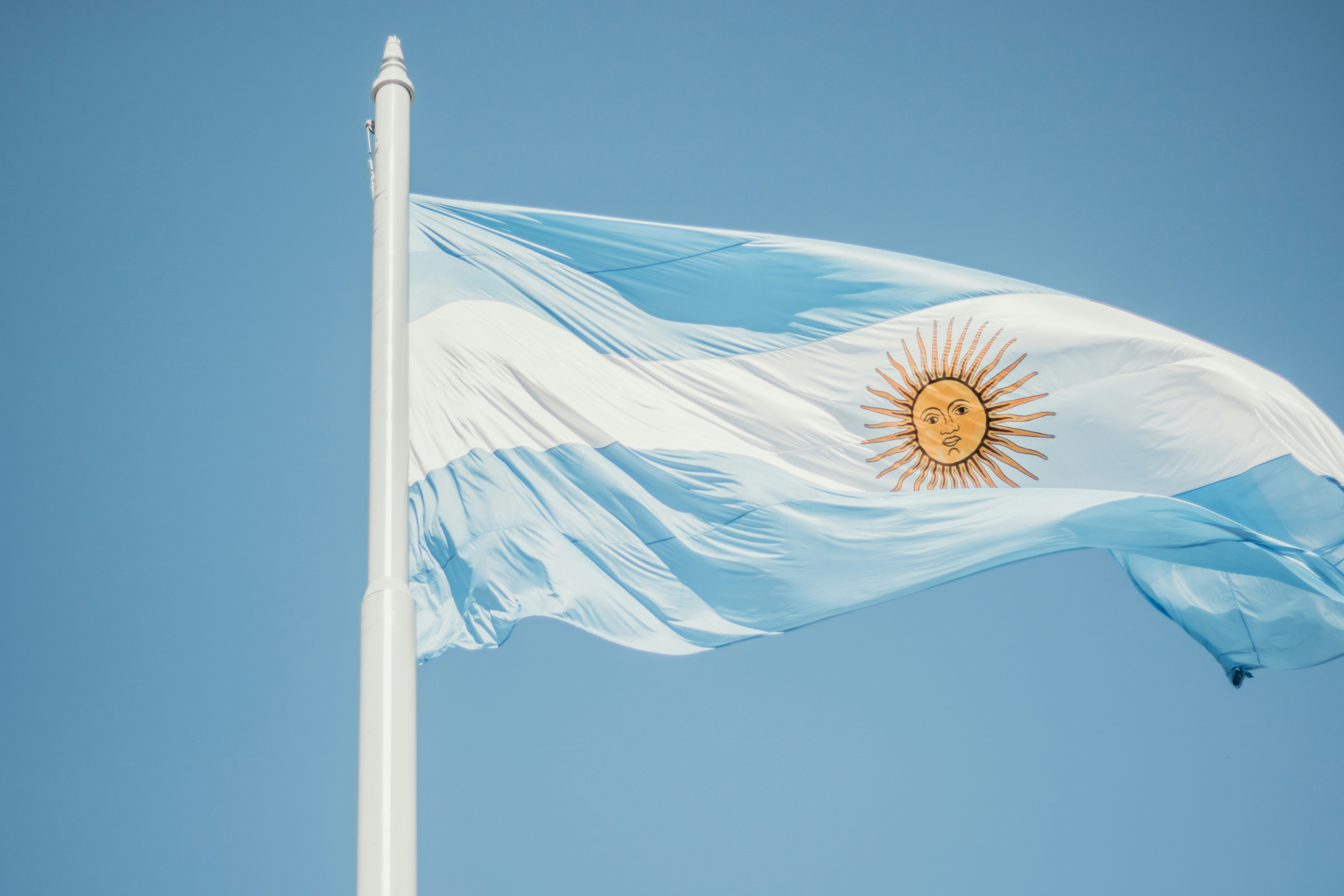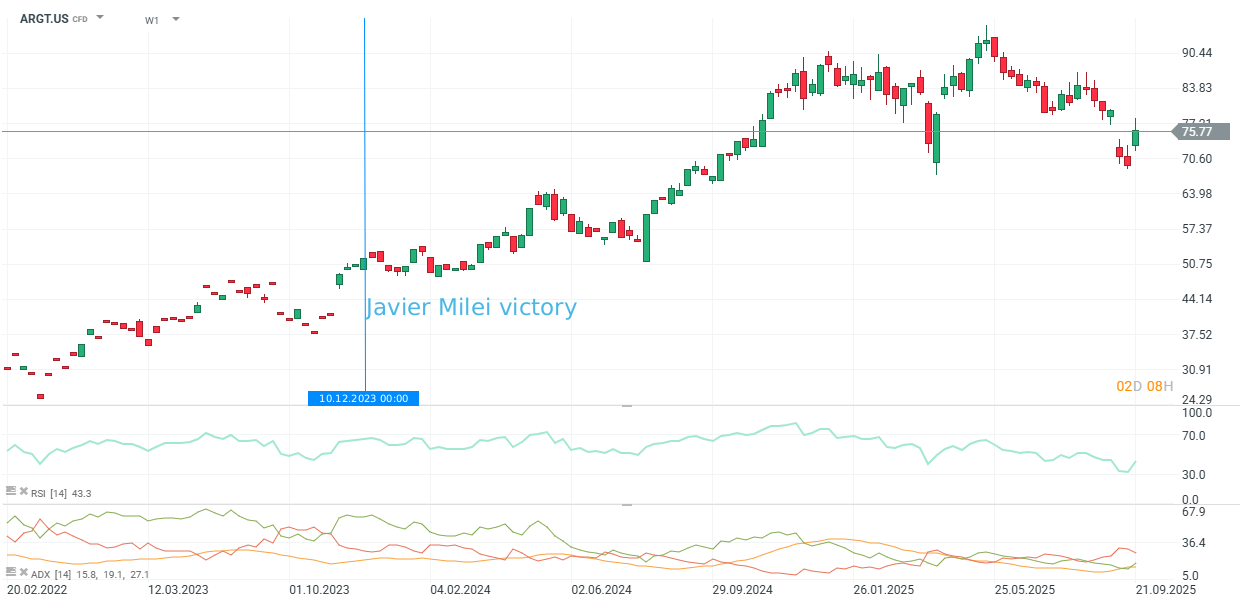After receiving $30 billion from the IMF and the World Bank, Argentina is once again on the brink of bankruptcy. This would be the country’s fourth default or restructuring in the last 25 years. How did we get to this point?

How has Argentina's economy evolved since Milei's arrival?
It seemed that since Javier Milei’s victory in the general elections of December 2023, the country’s economy had improved significantly. In fact, foreign investors welcomed the changes. As the economy improved, Milei also allowed the free movement of capital in and out of Argentina, boosting investor confidence in its economy.
The country’s stock index, called Merval, was the best-performing in the world in 2024, rising 130% in dollar terms, while investment funds considered incorporating Argentine bonds among their products. But in recent weeks, everything has gone wrong. What have been the most important milestones in Javier Milei’s two years leading Argentina?
Inflation reduction
Price growth in recent years had remained close to 100%. At the time of his electoral victory, inflation had reached 211%, and by April it peaked at 294%. However, since then it has managed to stabilize at 30%, and it is expected to confirm the downward trend in October with growth of “only” 25%.
Economic growth
Argentina’s economy grew 6.3% in the second quarter of this year compared to the same period last year, surpassing the record of the first quarter. This marks the fastest expansion rate since Q2 2022, driven by a strong rebound in the agricultural sector as the effects of a historic drought that had severely hit grain production began to fade.
Poverty rate
Argentina’s poverty rate dropped sharply in the second half of 2024, after austerity measures and public spending cuts initially pushed millions of people into hardship. The rate fell from 52.9% in the first half of last year to 38.1%
Trade balance
Argentina’s trade balance has been one of Milei’s main focuses. Results have been positive, showing signs of improvement in 2025 compared to previous years. Argentina accumulated a trade surplus of $5.071 billion, a positive dynamic though lower than the previous year, when the country closed 2024 with a historic surplus of $18.928 billion.
Foreign trade maintains a sustained surplus, driven by agribusiness and energy exports, even in a context of relatively stable international prices, while rising imports reflect a more dynamic domestic economy.
Still, the picture is not perfect: with China, Argentina maintains a structural deficit close to $100 billion over the last five governments.
Fiscal deficit
Milei’s flagship policy is the fiscal surplus. To achieve it, he applied the “chainsaw”: cuts in education, public works, and subsidies; layoffs in the state sector; and ministry mergers. He also launched a tax reform eliminating 19 taxes, lowering tariffs on capital goods, and creating the Large Investments Incentive Regime (RIGI), with exemptions and accelerated amortizations. He vetoed laws expanding pensions or social benefits, defending “zero deficit” as a priority.
The result: in August 2025, the accumulated primary surplus equaled 1.3% of GDP. An unprecedented turnaround for a country used to spending more than it collects.
Why then is Argentina in crisis?
Milei has achieved significant fiscal and regulatory progress since inheriting the economic chaos of Peronism in December 2023. He balanced the budget and freed thousands of entrepreneurs from bureaucratic red tape.
But investment has not arrived as expected, and economic growth has slowed. The blame, as always, lies with doubts about the central bank and peso instability.
For over a year, Argentina maintained the capital controls of the previous government, and the central bank used a fixed exchange rate with the dollar below the inflation rate to prop up the peso. Too many pesos chasing too few goods at an overvalued exchange rate made Argentines feel wealthier than they really were, encouraging imports in foreign currencies.
In fact, Argentines have been shopping abroad for branded refrigerators or beef—Argentina’s flagship export product—which, due to these exchange rate distortions, is cheaper than the local version. For exporters, selling abroad is less profitable because they receive dollars at an outdated exchange rate, generating an external deficit—the opposite of Milei’s goal.
The government knew it had to let the market find the peso’s true value. In April, the central bank announced it would keep the currency within a fluctuation band, and this worked for a time. But when the Treasury stopped issuing short-term notes with high coupons to banks, customers began replacing pesos with dollars.
At first, it was a trickle. But when Milei performed poorly in the Buenos Aires provincial elections—home to almost 40% of the population—fears of Peronism’s return surged. Argentines launched another round of peso selling. The peso plunged nearly 10% in 15 days, hitting the bottom of the fluctuation band adopted in April when Milei loosened Argentina’s strict capital controls after obtaining a $20 billion IMF loan.
Normally, a central bank would raise interest rates to curb credit and strengthen the currency, attracting peso capital and discouraging dollarization. But raising rates too much in Argentina means further suffocating families and businesses already burdened with high costs.
Since Argentines have lived through several crises, they know the peso always ends up devaluing. If they don’t see attractive interest rates or confidence in fiscal policy, they flee from the peso.
And that is exactly what happened. Local investors grew fearful the government would have to abandon the fluctuation band and devalue the peso, further fueling dollar demand. The central bank spent $1.1 billion in three days, and these dollar sales, in turn, unnerved bondholders, who feared the government was burning through its scarce reserves—estimated at under $5 billion—causing bond prices to collapse.
Will the U.S. save Javier Milei?
The hemorrhage only stopped after the U.S. Treasury tweeted Monday that it would extend financial aid and Milei’s government announced a temporary suspension of export taxes.
Bessent said Washington would consider purchases of Argentine currency or sovereign debt through a fund controlled by the U.S. Treasury, adding that “all options” were on the table.
He evoked the words of Mario Draghi, former ECB president during the eurozone crisis, saying that the U.S. would do “whatever it takes” to sustain Argentina’s financial markets.
The peso recovered after Bessent’s pledge of support, appreciating 6%. The Merval index rallied strongly, and Argentine dollar bond yields fell to around 15%. Still, they remain far from offering investor security. The next riskiest emerging market bonds, like those from Ecuador or Angola, trade at “only” around 11%.
Before the Buenos Aires debacle, Milei planned to reach single-digit yields next year, low enough to issue new bonds. That will depend on whether Milei recovers in the midterm national elections, with the key date being October 26.
Would dollarization be the solution?
On the one hand, it would eliminate the risk of peso devaluation and the political temptation to print money to cover deficits, and inflation could be stabilized quickly.
But on the downside, Argentina would lose monetary sovereignty and depend on the Federal Reserve’s policy. If the dollar appreciates, domestic prices become more expensive globally, exports fall, the trade balance worsens, and Argentina loses competitiveness—precisely the opposite of what it needs.
Moreover, to dollarize, Argentina needs real net dollar reserves to exchange for pesos in circulation—something it does not have today (its net reserves are extremely low). Although there was talk of $20 billion in reserves, this actually includes credit lines and other liabilities that cannot easily be liquidated. Current calculations suggest around $5 billion, against a total money supply of about $40 billion—insufficient to dollarize the economy.
Therefore, at this moment, the only viable option seems to be for the peso to gain stability and investor confidence, both local and international. That could be achieved with a permanent fiscal surplus. The question is whether Milei can pull it off—or if he will have enough time.
How to Invest in Argentina with XTB?
Within XTB’s available offering, our clients have several options to trade in the Argentine market.
One of them is through the MSCI Argentina ETF (ARGT.US), the only exchange-traded fund in the world that invests in some of the country’s largest and most liquid stocks. In addition, it allows trading both long and short positions.

We also offer the possibility to invest in some of the country’s key companies that are listed in the U.S. Examples include e-commerce company Mercado Libre, oil company YPF, Loma Negra Industrial, Banco Macro, Grupo Financiero Galicia, Pampa Energía, and Telecom Argentina.
Daily summary: euphoria in small caps; copper breaks new highs 🚀
BREAKING: oil muted after EIA data 📈
BREAKING: EURUSD ticks lower after slightly better ISM data 🔎
BREAKING: US PMI services lower than expected 📌


